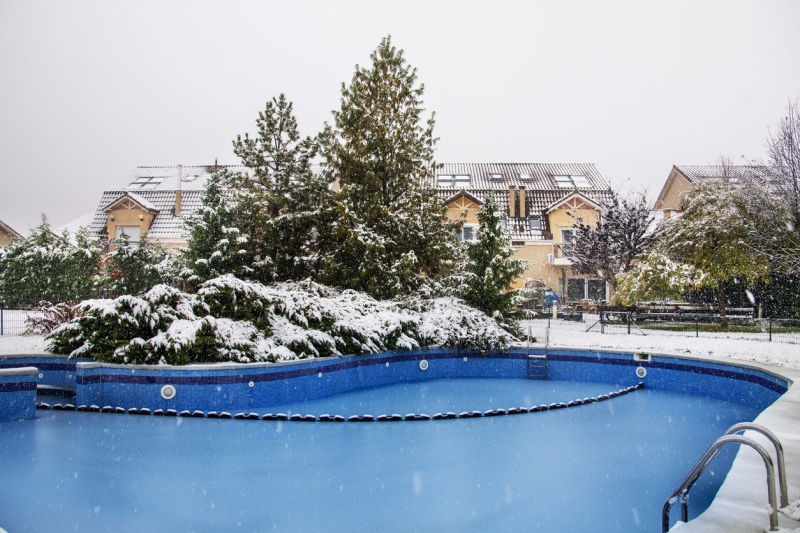Safeguarding Your Investment: The Art of Pool Winterization
When the leaves begin to turn and the nights grow chilly, it's time to think about putting your pool to bed for the winter. A thorough closing not only protects your pool from frost damage but also makes your life easier when you reopen in the spring. In this guide, we'll walk you through balancing the water, clearing out the lines, and properly covering your pool, ensuring it weathers the cold months like a champ.

Why a Proper Closing Is Essential
Think of pool closing as taking your pool on a long vacation. If you don't properly pack its bags - by balancing the water and securing the equipment - your pool might come back with damage such as cracked lines or a stained surface. Not to mention, an improperly closed pool can turn into a swampy mess by spring, costing you time and money to remedy.
Getting Started: Balancing and Cleaning
Before you can cover everything up, it's important to leave your pool in as pristine a state as possible.
Balance the Chemistry
Adjust pH, total alkalinity, and calcium hardness to recommended levels, just as you would during the swimming season. Imbalanced water over winter can eat away at surfaces or cause scale buildup.
Shock and Algaecide
A final shock treatment and a dose of algaecide help prevent algae blooms. Follow the instructions carefully so the chemicals have time to disperse before you shut everything down.
Give It a Good Scrub
Vacuum the floor, brush the walls, and skim the surface. Removing debris now helps avoid staining and bacterial growth while the pool is dormant.
Lowering the Water Level and Clearing the Lines
Freezing water expands - and expansion inside your plumbing lines or skimmer can cause significant damage.
Drain It Down
For in-ground pools, lower the water level below the skimmer mouth or tile line. Above-ground owners often drain just enough so that the water won't crack the skimmer or pump.
Blow Out the Lines
Use an air compressor or shop vac to force water out of the plumbing. Once you see air bubbles instead of water, quickly cap or plug the return and skimmer lines. This step helps ensure no water is left behind to freeze.
Protect the Equipment
Remove drain plugs from the pump, filter, and heater. Store them in the pump basket or a labeled bag so they won't get lost. If possible, store the pump and other removable equipment indoors.
Covering Your Pool
A quality cover is your pool's shield against winter's harshness.
Choose the Right Cover
You have many pool cover options ranging from simple tarps to heavy-duty safety covers. Safety covers can support weight (like snow or a stray animal) and are anchored securely, but they're pricier. Standard winter covers are more affordable but may require additional weights or water tubes to keep them in place.
Check for Tears
A small hole in your cover can invite leaves, water, and debris into your winterized pool. Patch any rips or wear before you secure it for the season.
Secure It Well
If you're using a traditional cover, line the edges with water bags or weights. Safety covers require anchoring straps that are mounted to the deck around your pool.
Winter Monitoring
Just because the pool is closed doesn't mean you can forget about it until spring. Periodic checks help catch small problems before they escalate.
Remove Excess Water or Snow
Use a cover pump to remove accumulating rain or melted snow. Heavy weight on the cover can cause it to sag or tear.
Keep Debris Off
Leaves, branches, and other debris also weigh down the cover and can speed up wear and tear. A quick sweep every few weeks can save you a big headache down the line.
Closing your pool may not be as fun as opening it, but it's a crucial step in preserving your backyard oasis. By carefully balancing water chemistry, draining and protecting your lines, and choosing a solid cover, you'll ensure that once winter melts away, your pool is primed for an easy, hassle-free opening. Think of it as tucking your pool in for a well-deserved rest - come spring, it'll be ready to dazzle again.
